How to Quickly Remove Adobe Acrobat Reader DC on Mac
Adobe Acrobat Reader DC is a popular, free PDF software for viewing, printing, signing and commenting on PDF documents. Yet some users who have installed this app could encounter problems during the usage, and they may turn to other PDF editors.
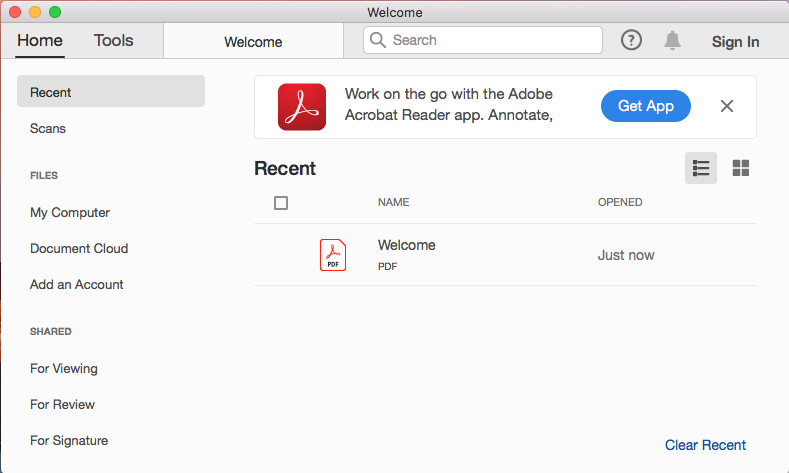
Here are the possible issues when you try to remove Adobe Acrobat Reader DC on Mac:
> Adobe Acrobat Reader DC cannot be moved to trash as it is open
> Adobe Acrobat Reader DC still appear when trying to open a PDF file
> Adobe Acrobat Reader DC leftovers scatter around and are hard to locate…
“How can I remove Adobe Acrobat Reader DC from Mac?” If you are looking for the answer to this question, read through this post to learn the proper uninstall methods.
Preparation: quit Adobe Acrobat Reader DC
Prior to the uninstall, you should go to check if Adobe Acrobat Reader is in use. If you cannot delete Adobe Acrobat Reader from the /Applications folder afterwards, chances that this app is still active or there exists a PDF file that is opened by this app.
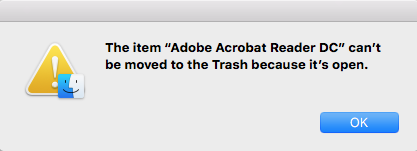
There are several ways to (force) quit an active or frozen app in macOS/Mac OS X:
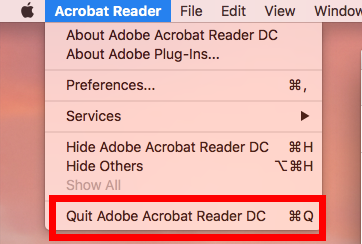
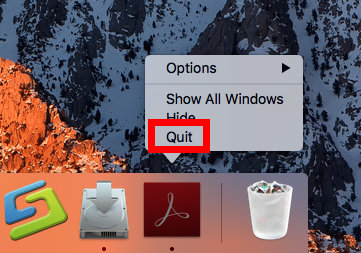
(1)Right click on the app icon appearing in the Dock and choose Quit
(2)Click the app from the Menu Bar and choose Quit [app name]
(3)Launch Activity Monitor, type the app name in the search box, select any process pertaining to the target app, click X on the upper left corner, and click Quit button
(4)Press the Option – Command – Esc keystroke to bring up the Quit Applications window, then select the app in the list and click Force Quit button
Sometimes you may still fail to shut down large, security or malicious apps by any of these options. The last choice is to (5) reboot your Mac into Safe Mode to kill the app.
2 Ways to Uninstall Adobe Acrobat Reader DC for Mac
Basically most third party apps can be uninstalled by simply deleting it from the Applications folder, but the problem is that some of the app components won’t go away along with the deletion of the app. If you want to have a clean uninstall of Adobe Acrobat Reader, you need to manually detect those invalid hidden deep in the system. A better option is, to utilize a professional remover to handle the task.
Way 1: remove Adobe Acrobat Reader DC with Osx Uninstaller
As a lightweight yet poweful tool optimized for the latest versions of macOS, Osx Uninstaller is able to easily remove all components of target app within a few clicks.
The clip shows you how to delete Adobe Acrobat Reader DC by using OSX Uninstaller:
- Launch Osx Uninstaller via Launchpad, in Spotlight or in /Applications folder.
- Select Adobe Acrobat Reader DC in the list and click Run Analysis to start scanning.
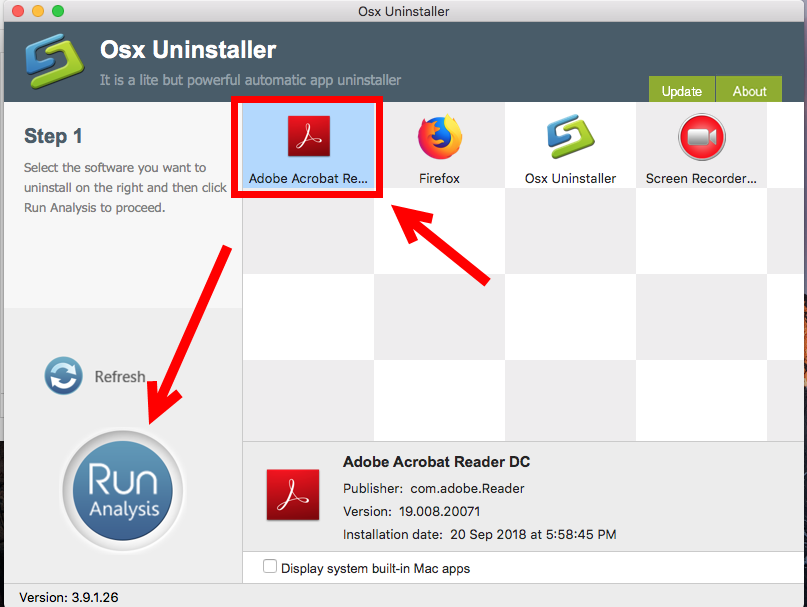
- Click the Complete Uninstall button, and click Yes in the pop-up dialog box.
- Once the removal is complete, click Back to Interface to re-scan your Mac.
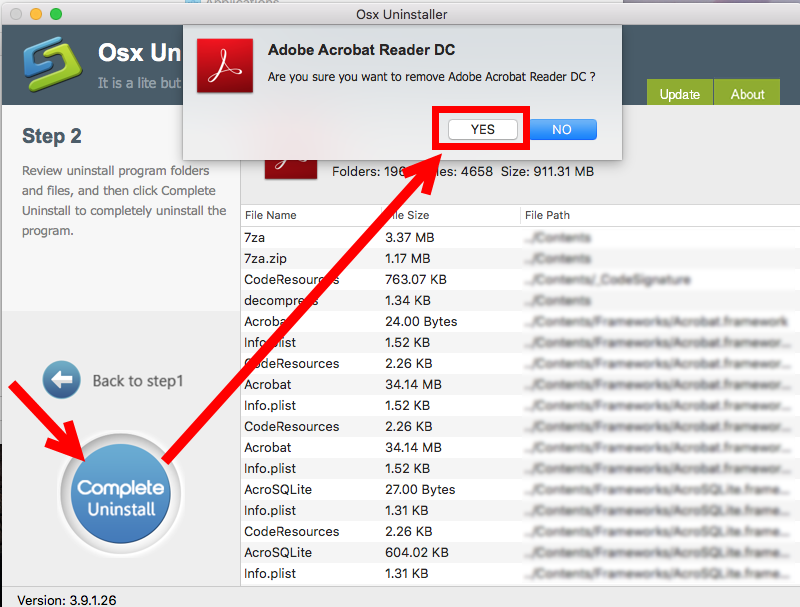
By using this tool, you could easily get rid of Adobe Acrobat Reader DC, with not trace left. So here comes the next question: how to get Osx Uninstaller for your Mac?
You can click the Download button below, and install it to your Applications folder. Please note that Osx Uninstaller is a paid software, which means you will need to pay for a valid license before using it. Meanwhile, the vendor provide in-time tech assistance and also promise a full refund if you are not satisfied with its performance.
If you don’t want to pay extra money on it, just adopt the manual method below.
Way 2: delete Adobe Acrobat Reader DC in /Applications folder
Here are the regular steps to delete Adobe Acrobat Reader from macOS/Mac OS X:
- Open up Finder and click the Applications folder from the sidebar.
- Locate Adobe Acrobat Reader, right click on it and choose Move to Trash.

- Enter the admin password and click OK to allow the change
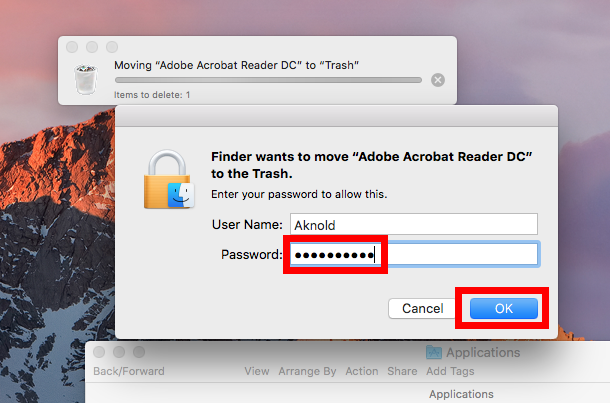
- Head to Finder menu, choose Empty Trash, and click Empty Trash in the pop-up dialog. Alternative, right click Trash icon in dock, choose Empty Trash and click Empty Trash again.
Warning: Emptying Trash is irrevocable, and everything in the Trash will be deleted from your Mac immediately. Before performing this act, go to check if all items in the Trash are no longer needed. If you wanna avoid any risk in this part, you can just delete the app in the Trash. To do so, locate and right click Adobe Acrobat Reader in the Trash, choose Delete Immediately, and click Delete in the pop-up window.
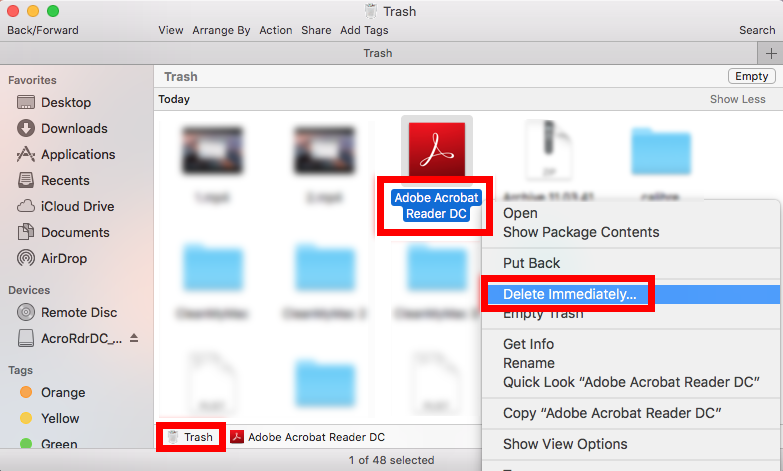

Typically, this trash-to-uninstall method can be used to uninstall third party apps in all versions of macOS / Mac OS X. If you need to uninstall apps frequently, using a professional tool like Osx Uninstaller helps you avoid the repetitive, laborious work.
Tip: detect Adobe Acrobat Reader DC leftovers in system
As we mentioned before, Adobe will store associated files in the deep system directory even its products have been removed from the Applications folder. Those leftovers may not occupy much disk space or do harm to system, but if you wish to remove all the traces, you can take the following steps to hunt then down.
- In a Finder window, click Go from the Menu Bar, and choose Go to Folder.
- Type ~/Library and hit Enter key to open up the user library inside home folder.

- Type Acrobat Reader in the search box, then select the folders named after Acrobat Reader under ‘This Mac’, and move them to the Trash.
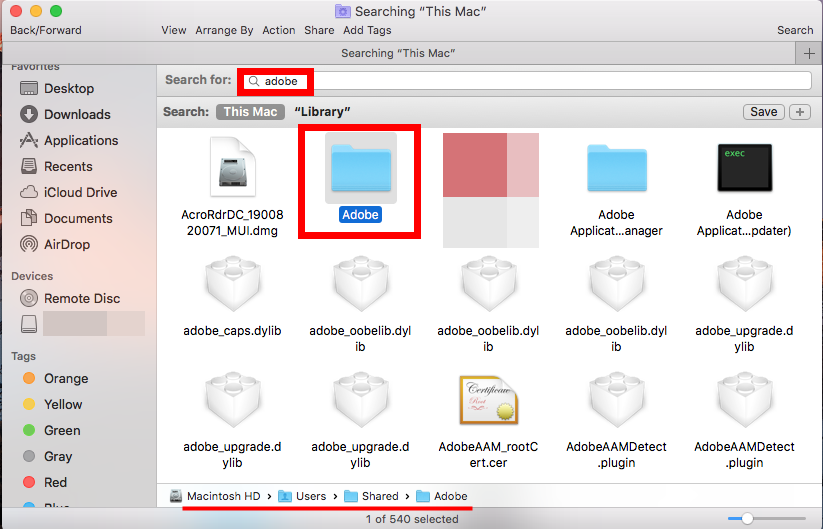
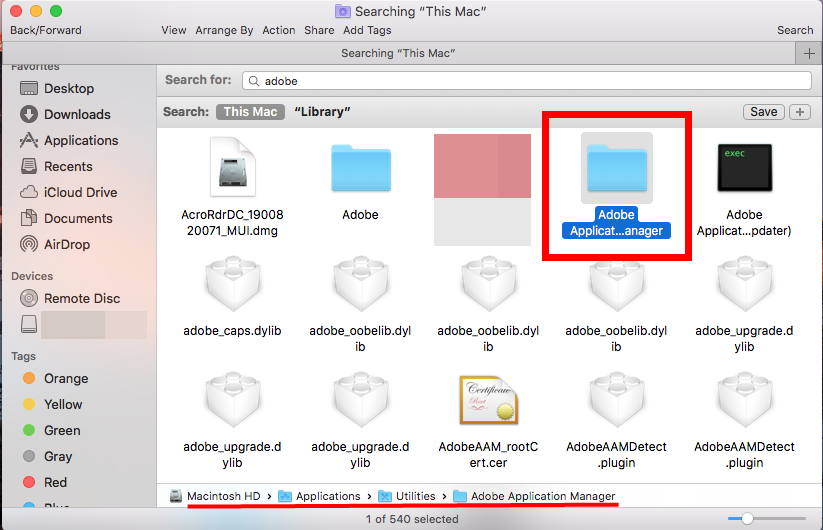
- Click ‘Library’ next to ‘This Mac’, and remove Adobe Acrobat Reader DC from Mac components.

- Continue to detect Acrobat Reader leftovers in the top level Library (/Library).
- Empty the Trash to permanently delete all Adobe Acrobat Reader components.
Here are the directories that may contain Adobe Acrobat Reader DC components:
~/Library/Caches, ~/Library/Preferences, ~/Library/Application Support, ~/Library/Saved Application State, ~/Library/LaunchAgents, ~/Library/LaunchDaemons, ~/Library/PreferencePanes, ~/Library/StartupItems

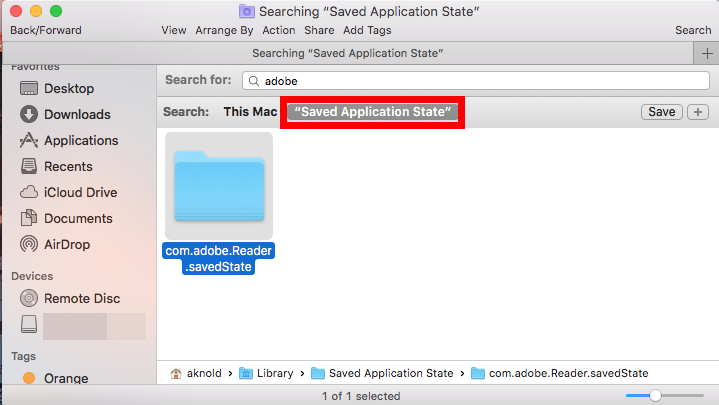
Warning: Again, once you delete items in Trash, the items cannot be restored (at least by normal means). Before permanently remove those related files in Trash, we strongly suggest you to reboot your Mac and use it for some days to see if any problem happens. If issues occur, go to check if you’ve mistakenly deleted anything.
That’s the end of this tutorial. Here we list two approaches to remove Adobe Acrobat Reader DC on macOS, and share some tips for you to sweep out app leftovers. Have you solved your problem now?Any suggestion are welcomed to help improve this tutorial.


 $29.95/lifetime
$29.95/lifetime